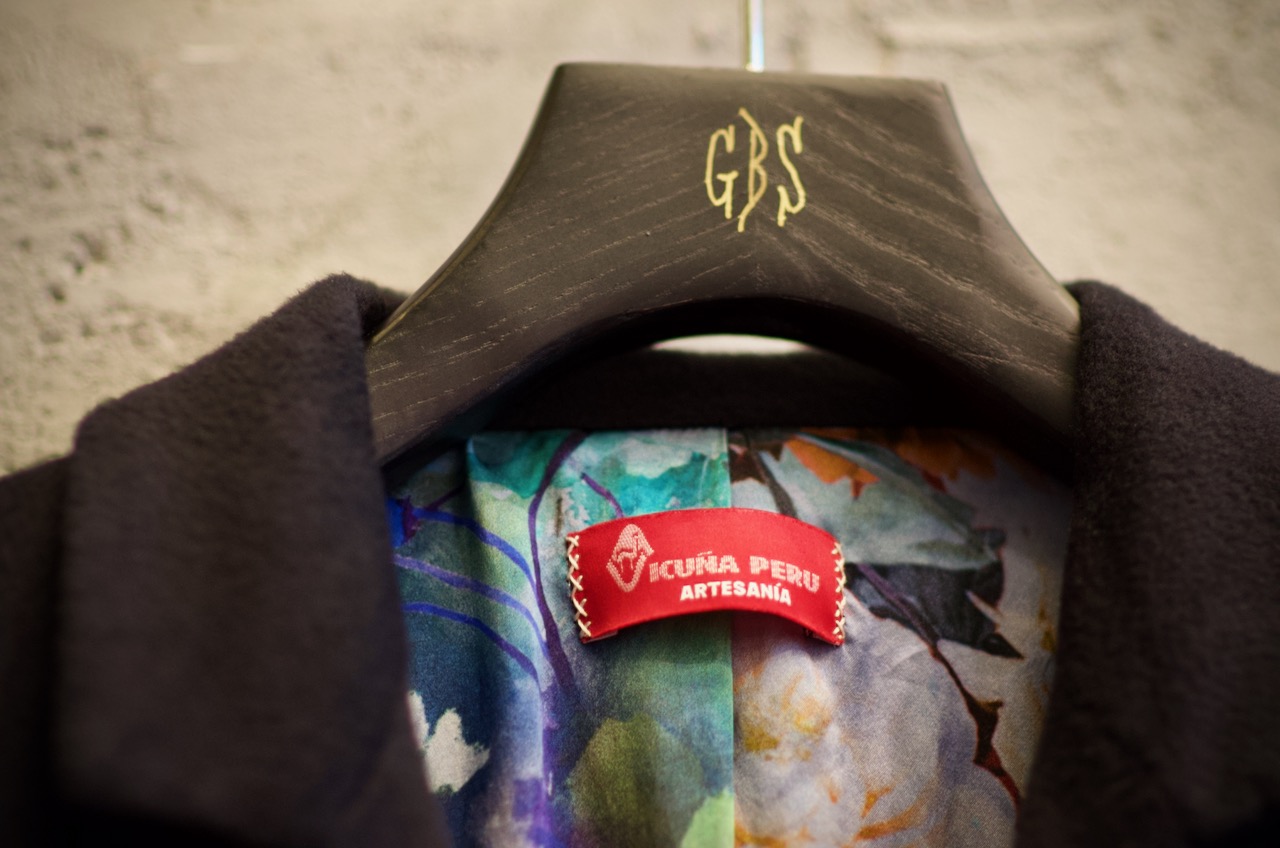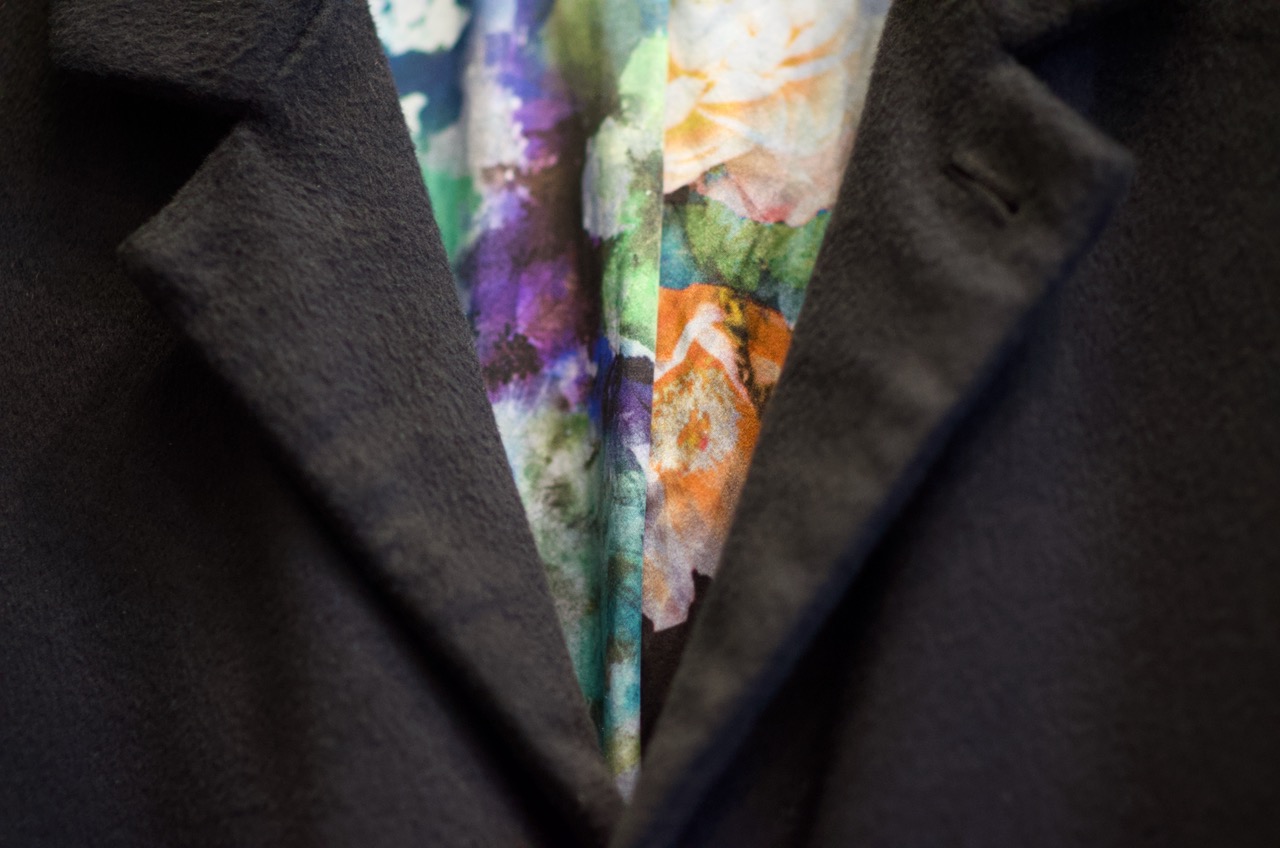A Celestial Offering
from Geoffrey B. Small
Using the world’s finest and rarest fleece from the prized Peruvian vicuña, once revered by the Inca as the “Yarn of the Gods”, designer Geoffrey. B Small has created the label’s most extraordinary and unique piece to date, combining his unwavering dedication to expert craft techniques with one of the most remarkable and ancient models of sustainable practice.
Working as an independent designer for over 40 years, Geoffrey B. Small has established an entirely new standard of quality outside of the mainstream fashion system, shunning fast-paced production and working without compromise to ensure that ethical and environmentally conscious processes are at the core of his practice.
In 2008, Small relocated his studio to Cavarzere, Venice to work exclusively with local fabric mills and artisans using strictly handmade production techniques, all operating within close proximity to his workrooms in an effort to minimise the label’s carbon footprint and to reduce chemical and energy wastage. His collections draw from his extensive archive of historical and tailoring research and are limited to less than 600 unique pieces per season, made with natural fabrics woven using some of the oldest wooden looms in the world and finished by hand with specially developed fabric treatments in Small’s workrooms.
With such a profound dedication to handcraft and textile development, it comes as no surprise that Small should turn to the fleece of the vicuña, one of the most remarkable raw natural materials available today, whose scarcity and fine composition makes it not only one of the most luxurious fibers in the world but the cultivation of which also represents a key model in developing sustainable technologies. We spoke with Geoffrey B. Small about the fascinating history of the vicuña and his ongoing commitment to responsible sourcing.
While the ancient Inca worshipped, honored and protected the magnificent animals for centuries, the Spanish conquistadors in the 16th century invaded, slaughtered and wiped out both the incredible Inca civilisation and the vicuña for profit and greed-killing, skinning the animals for their valuable coats. Under colonial rule, the entire vicuña population was reduced to only a few thousand animals and by the 1960s, the animal was listed at the top of the world’s endangered species list and on the verge of total extinction.
The Peruvian government stepped in to implement a revolutionary program in an effort to save the vicuña, working in collaboration with local communities to establish a protection area sanctuary reserve in the Andes mountains and an economic incentive plan based upon keeping the vicuña alive. The program was centered on shearing the fleece of the animals (not killing them for their pelts), cultivating the regrowth of their population, guaranteeing a high price for the fleece for the farmers at the local level, and maintaining strict government certification and controls of production methods, quantities and exports.
The program was extremely successful and by the end of the 1990s the Peruvian government was able to report that the vicuña population had been brought back to exceed over several hundred thousand animals, enabling the vicuña to be taken off the world’s endangered species list – while simultaneously creating a viable and stable income for local communities. To harvest the fleece of the vicuña conservationists and rural villagers worked together to revive the ancient ritual devised by the Inca called the ‘chaccu’, in which herds of vicuñas are humanely rounded up, then carefully sheared and released.
Vicuña cultivation represents a total revaluation of what sustainability really costs in our world and in our approach to clothing and fashion, confirming that less is indeed more. In fact, over the years, cultivators in Peru have learned that even though the Peruvian government has set a minimum regrowth gestation period of two years before a vicuña’s fleece can be sheared, the quality of the fibers increases dramatically the less regularly shearing is performed. High prices can be obtained by waiting three to four years or longer, with stories and reports that the best fibers have been obtained by not shearing at all but allowing the animals to naturally shed their hairs when they want to by using wooden blocks which the vicuña can rub themselves against when they are shedding, allowing the cultivators to pick up the fibers from the ground as they fall.
The vicuña earned its reputation as the “Yarn of the Gods” for its divine properties. It is one of the world’s finest fibers, measuring 11-13 microns in diameter compared to 14-19 micron diameter of the finest cashmere, making it physically softer and finer than virtually any other textile yarn substance. In every aspect of working with it from hand cutting, sewing, treating and finishing, it is a miraculously excellent material to create clothing with. Its sheer scarcity contributes to increasing its value, making it all but priceless.

